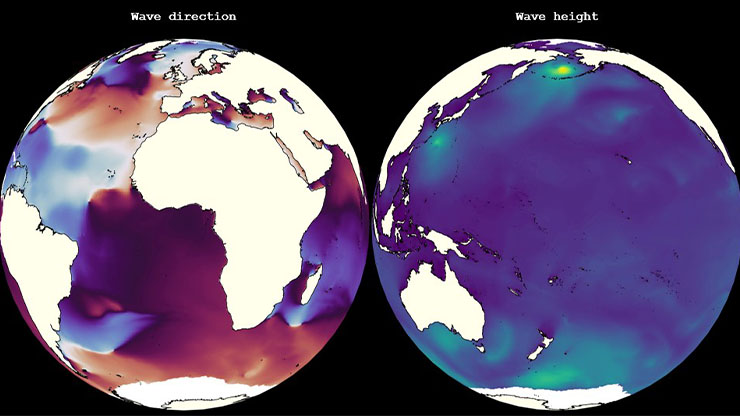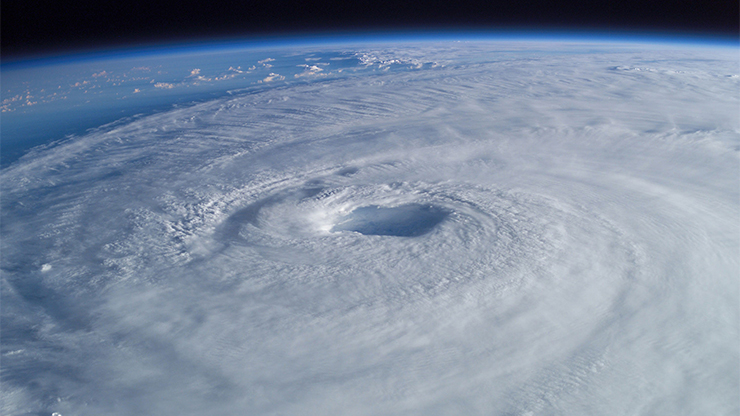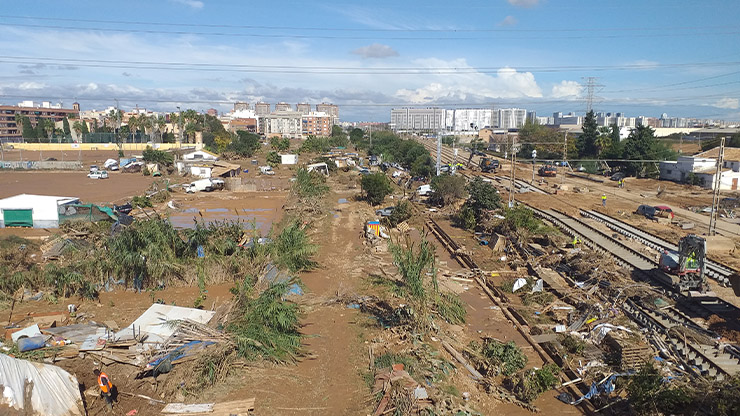Coupled Delayed-action Oscillator Model Effectively Captures El Niño Dynamics
El Niño is an atypical climate pattern that is characterized by a period of unusually warm water that materializes in a southward-flowing current in the equatorial Pacific Ocean. More specifically, it is identified by a minimum of five consecutive three-month running means of sea surface temperature (SST) anomalies in the “Niño 3.4” region of the Pacific that are above the threshold of +0.5° Celsius (see Figure 1) — a standard of measure called the Oceanic Niño Index (ONI) [4].
![<strong>Figure 1.</strong> Niño 3.4 region in the equatorial Pacific Ocean. Figure courtesy of [4].](/media/f2ccptn1/figure1.jpg)
The phenomenon represents the so-called “warm phase” of the larger El Niño-Southern Oscillation (ENSO): an irregular cycle of coupled ocean temperature and atmospheric pressure oscillations across the entire equatorial Pacific. While ENSO is not inherently predictable, the historical average period for its occurrence has been 3.7 years [3]. However, recent evidence suggests that El Niño events are becoming stronger and more frequent, with a 3.3-year average in the last two decades.
According to the ONI, 2015-2016 and 2023-2024 were respectively marked by “very strong” and “strong” El Niño events, with temperature variations of more than two degrees (see Figure 2). These types of events can trigger dry spells and drought, wildfires, crop decimation, coral bleaching and mortality, and even disease outbreaks. For example, coral populations that survived the 1982-1983 El Niño succumbed to the 1997-1998 instance because the populations could not sufficiently recover between events [2]. “In certain years, this current would be unusually strong, bringing heaving rains and flooding inland but also decimating fishing stocks, bird populations, and other water-based wildlife,” Juancho Arranz Collera of the University of the Philippines Baguio said.
During a contributed presentation at the Third Joint SIAM/CAIMS Annual Meetings, which are currently taking place in Montréal, Québec, Canada, Collera compared an existing delayed-action oscillator (DAO) model and a coupled DAO model to assess their respective representations of the irregular fluctuations in SST that are associated with El Niño behavior patterns.
One of first models to address El Niño was a 1988 DAO: a simple nonlinear model for ENSO [5]. This model by Max Suarez and Paul Schopf makes two key assumptions: (i) the strongest coupling takes place in the central portion of the basin, and (ii) the emission of weakly coupled, westward propagating oceanic signals reflect from the western boundary before returning and recoupling to the atmosphere. Collera noted that the DAO model is merely an illustration of the El Niño effect and only predicts the general influence of external parameters on the behavior of \(T(t)\), the temperature anomaly.

The following delayed differential equation describes the DAO model:
\[\frac{d}{dt}T(t)=k(T)t-bT^3(t)-cT(t-\tau).\]
Here, \(kT(t)\) is a strong positive feedback within the coupled ocean-atmosphere system that occurs in the central equatorial Pacific; \(-bT^3(t)\) is an unspecified nonlinear net damping term that limits the growth of unstable perturbations; and \(-cT(t-\tau)\) is the contribution of equatorially trapped ocean waves that propagate across the Pacific before returning to interact with the central Pacific region after a certain time delay. “Wave velocities and the width of the Pacific basin determine the transit time \(\tau\),” Collera said. “And the strength of the returning, emerging signals is denoted by \(c\).”
In a dimensionless form, the DAO simplifies to
\[\frac{d}{dt}T(t)=T(t)-T^3(t)-\alpha T(t-\delta).\]
Collera pointed out three equilibria that represent a zero-temperature anomaly as well as “warm” and “cold” stationary states; these stationary states can become unstable and may lead to oscillatory patterns. Although this simple DAO model only considers a single region of the Pacific, it effectively accounts for oceanic wave transit and captures the behavior of the ENSO phenomenon.
In 2007, a different study by Ian Boutle, Richard Taylor, and Rudolf Römer introduced a coupled DAO model that describes two regions along the equatorial Pacific with strong ocean-atmosphere coupling [1]:
\[\frac{d}{dt}T_1(t)=T_1(t)-T^3_1(t)-\alpha T_1(t-\delta)+\kappa T_2(t), \]
\[ \frac{d}{dt}T_2(t)=T_2(t)-T^3_2(t)-\alpha T_2(t-\delta)+\kappa T_1(t).\]
For simplicity, this updated model assumes that the parameters \(\alpha\) and \(\delta\) are the same in both regions. Depending on the initial SST anomalies, the researchers were able to drive the regions into (i) stable, non-oscillatory solutions; (ii) in-phase oscillations; and (iii) oscillations that are out-of-phase by \(\pi\).
Collera explained the numerical results of the coupled DAO, commenting on equivariant systems, the symmetry group, and symmetric equilibria. He found that the symmetry group allows for the classification of bifurcations and noted the presence of more equilibrium states than the non-coupled DAO.
After a brief discussion about Hopf bifurcations and other periodic behaviors in the coupled versus uncoupled DAO models, Collera affirmed the superiority of the coupled model in portraying El Niño dynamics. “The generalization to the coupled DAO model provided richer dynamics compared to the original simple DAO model,” he said. “The coupled DAO model yielded more stationary states as well as various kinds of oscillations that better depict the behavior of the SST anomaly.”
References
[1] Boutle, I., Taylor, R.H.S., & Römer, R.A. (2007). El Niño and the delayed action oscillator. Am. J. Physics, 75, 15-24.
[2] Glynn, P.W., Maté, J.L., Baker, A.C., & Calderón, M.O. (2001). Coral bleaching and mortality in Panamá and Ecuador during the 1997-1998 El Niño-Southern Oscillation event: Spatial/temporal patterns and comparisons with the 1982-1983 event. Bull. Mar. Sci., 69(1), 79-109.
[3] Kidwell, A., Jo, Y.-H., & Yan, X.-H. (2013). A closer look at the central Pacific El Niño and warm pool migration events from 1982 to 2011. J. Geophys. Res. Oceans, 119(1), 165-172.
[4] National Centers for Environmental Information. (2025). Equatorial Pacific sea surface temperatures (SST). National Oceanic and Atmospheric Administration. Retrieved from https://www.ncei.noaa.gov/access/monitoring/enso/sst.
[5] Suarez, M.J., & Schopf, P.S. (1988). A delayed action oscillator for ENSO. J. Atmos. Sci., 45, 3283-3287.
About the Author
Lina Sorg
Managing editor, SIAM News
Lina Sorg is the managing editor of SIAM News.

Related Reading
Stay Up-to-Date with Email Alerts
Sign up for our monthly newsletter and emails about other topics of your choosing.






